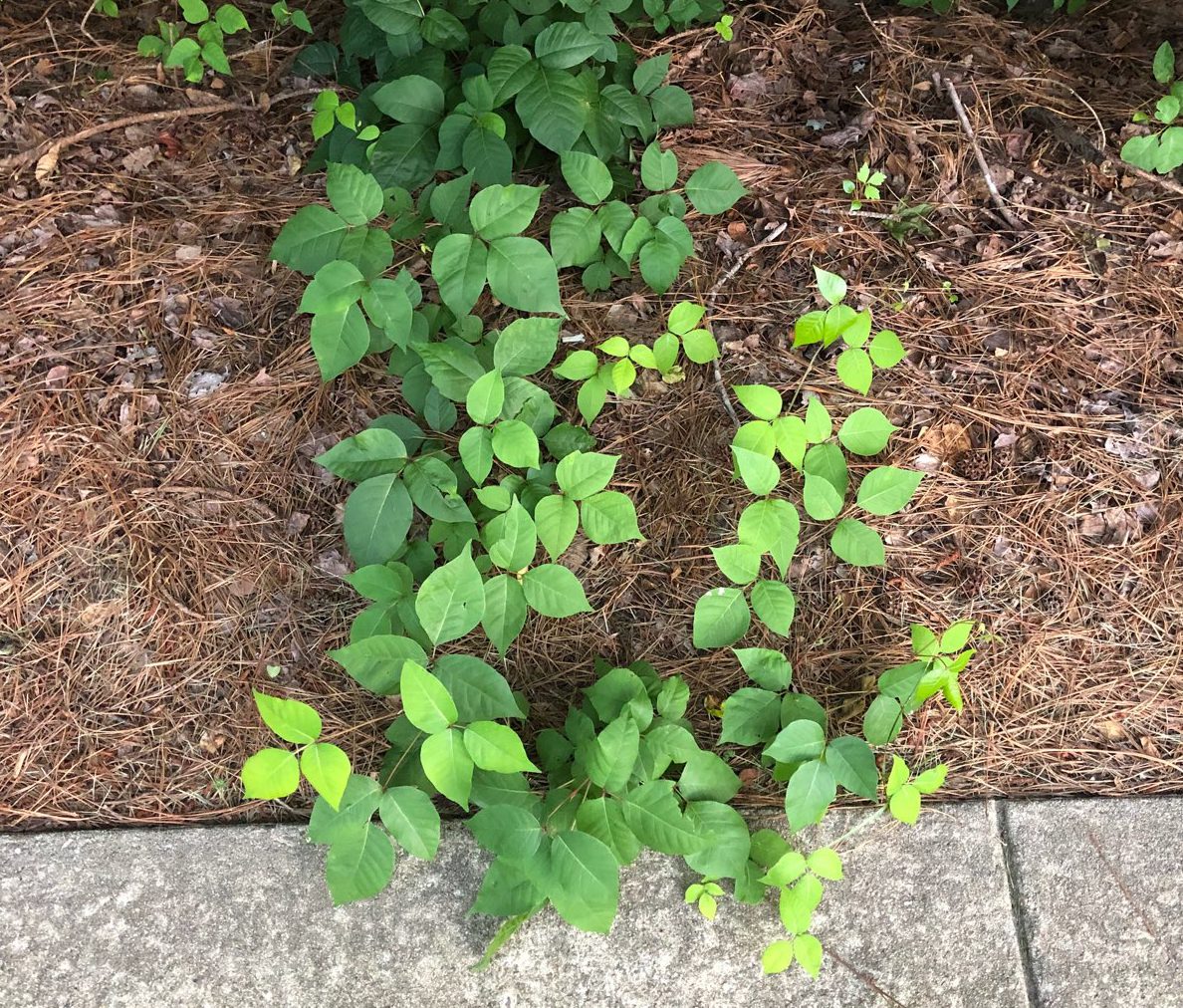Written by: Caroline Kramer, MD
It’s poison ivy season!!! “Leaves of three, let it be.”
Poison ivy is actually not poisonous, but causes an allergic skin reaction in about 85% of the population. There are 50 million cases of poison ivy, oak and sumac in the US every year!
The reaction is caused by a component of the oily sap called urushiol, from the Japanese word for sap (urushi). Urushiol is found in poison ivy, oak and sumac. Most of what we have in North Carolina is poison ivy, a vine or shrub with almond shaped leaves with a smooth surface and serrated edges, which are arranged in groups of 3. Leaves are green in the spring and summer and red in the fall.

Urushiol is a yellowish clear liquid present in the leaves, stems and roots of the plant, and can remain active for years. It binds to everything- clothes, garden tools, and pet fur (pets are not affected by it). Once the oil touches the skin, 50% is absorbed in 10 minutes, infiltrates into the tissue and binds to proteins. This causes the proteins to look different and our immune system starts to attack this “invader”. It takes repeated exposure to develop a reaction.
The first reaction can take 10-21 days after exposure to develop. After this, subsequent exposures cause a faster reaction, as the immune system now has memory for the oil/protein complex, usually 2-3 days. The typical skin reaction is redness, swelling and itching followed by blisters containing clear fluid. This usually lasts 1-2 weeks but can last as long as 5 weeks.
To prevent poison ivy, learn to identify the plant, and when removing it wear gloves and clothing to cover all your skin. Remove the clothing carefully, take a tepid shower with soap and scrub skin with a washcloth to remove any accidental exposure to the oil. Do not take a hot shower- this opens the pores and can cause the oil to penetrate more deeply!! Wash clothing in hot water with laundry detergent, and clean any tools, carts or surfaces with a good soap. If you have pets, ask your vet about wipes to use on their fur. Other products that may be helpful include Ivy Block- skin protectant which is applied before going outdoors to prevent oil from contacting the skin (still need to shower and wash clothing afterward), and Tecnu wash (deodorized mineral spirits) which cleanses a bit better than soap.
To treat poison ivy, the main focus is minimizing irritation and soothing the skin. Calamine lotion, cool compresses, colloidal oatmeal, baking soda bath, and zinc products are all helpful. Antihistamines such as benadryl are helpful for itching. Severe cases may require a prescription for prednisone. Over the counter hydrocortisone cream may be helpful, but should not be used on the face or for longer than 2 weeks as it can cause thinning of the skin and loss of pigment.
The poison ivy rash itself is not contagious- only the oil that is initially contacted can cause the reaction.
We can expect to see more poison ivy as a result of global warming and the increased carbon dioxide in the atmosphere, since carbon dioxide enhances not only the growth of poison ivy but also increases the amount of urushiol in the plant. Since the 1960s, the amount and potency of poison ivy has doubled! Be careful out there!!
